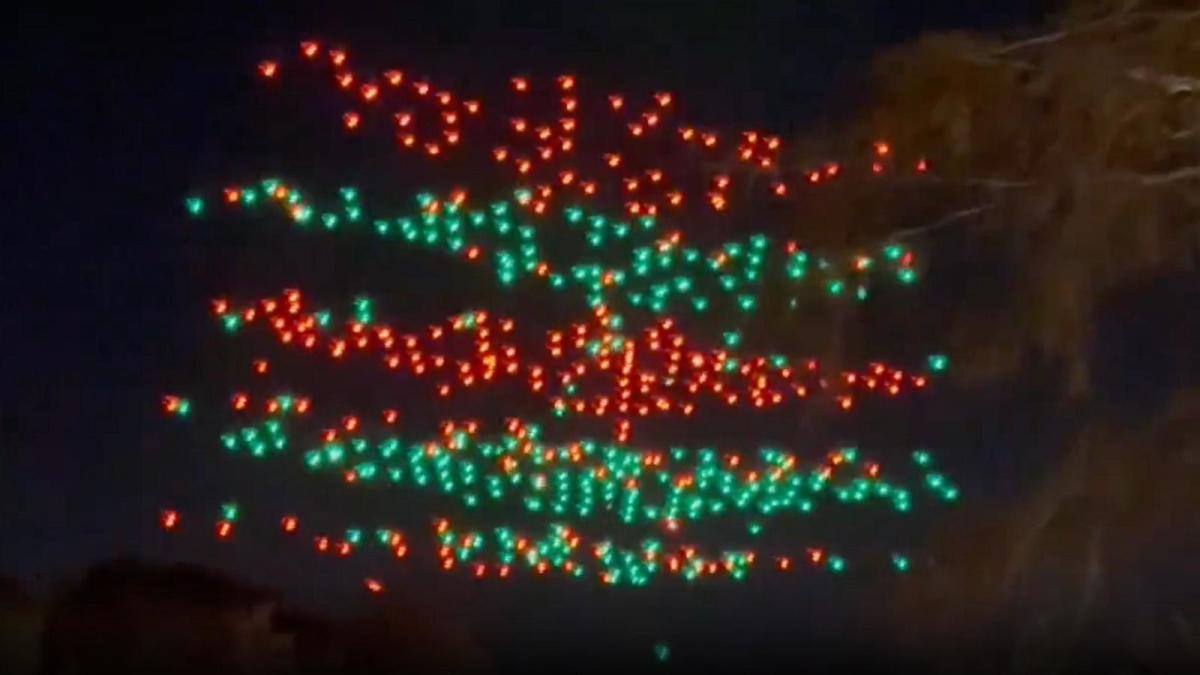Orlando drone show malfunction: This captivating incident unfolded during a spectacular nighttime drone display, leaving spectators stunned and raising crucial questions about safety protocols and technological reliability. The show, initially a breathtaking spectacle of light and movement, took an unexpected turn when several drones deviated from their programmed paths, creating a chaotic and concerning scene. This article delves into the technical aspects of the malfunction, explores potential causes, examines the response from organizers and authorities, and ultimately looks towards preventative measures for future drone shows.
We’ll analyze eyewitness accounts, examine potential technical failures ranging from software glitches to hardware malfunctions and environmental interference, and discuss the immediate impact on both the audience and event organizers. We’ll also explore the emergency response and investigate the lessons learned from this incident to improve safety and prevent similar occurrences.
The Orlando Drone Show Malfunction
A spectacular drone show over Orlando experienced an unexpected malfunction, leaving audiences and organizers scrambling to understand what went wrong. This incident highlights the complexities and potential risks involved in large-scale drone displays, prompting a closer look at the technology, safety protocols, and future implications for the industry.
The Orlando Drone Show Incident: Initial Reports
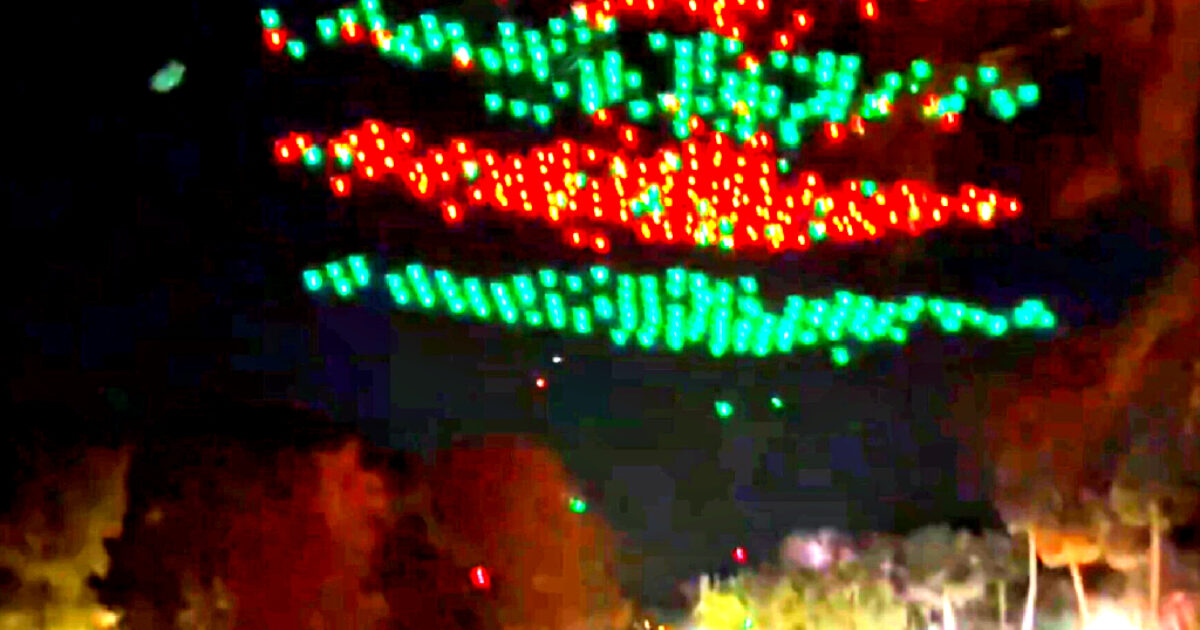
Reports indicate a significant malfunction during a planned drone light show in Orlando. The exact number of malfunctioning drones varied in eyewitness accounts, with some reporting a partial failure and others describing a more widespread issue. The drones, initially performing synchronized movements, reportedly began exhibiting erratic flight patterns, including uncontrolled descent and collisions. The show was abruptly halted as the drones deviated from their programmed sequence.
Eyewitnesses described a chaotic scene, with some expressing concern and others awe at the unexpected display. One spectator recounted seeing drones falling from the sky, while another described a stunning, albeit frightening, light show as the drones’ lights flickered and changed unpredictably before grounding. The timeline of events begins with the scheduled launch of hundreds of drones, their lights creating a breathtaking spectacle.
Within minutes, however, the synchronized formations broke down, leading to the chaotic descent of numerous drones.
Technical Aspects of the Malfunction
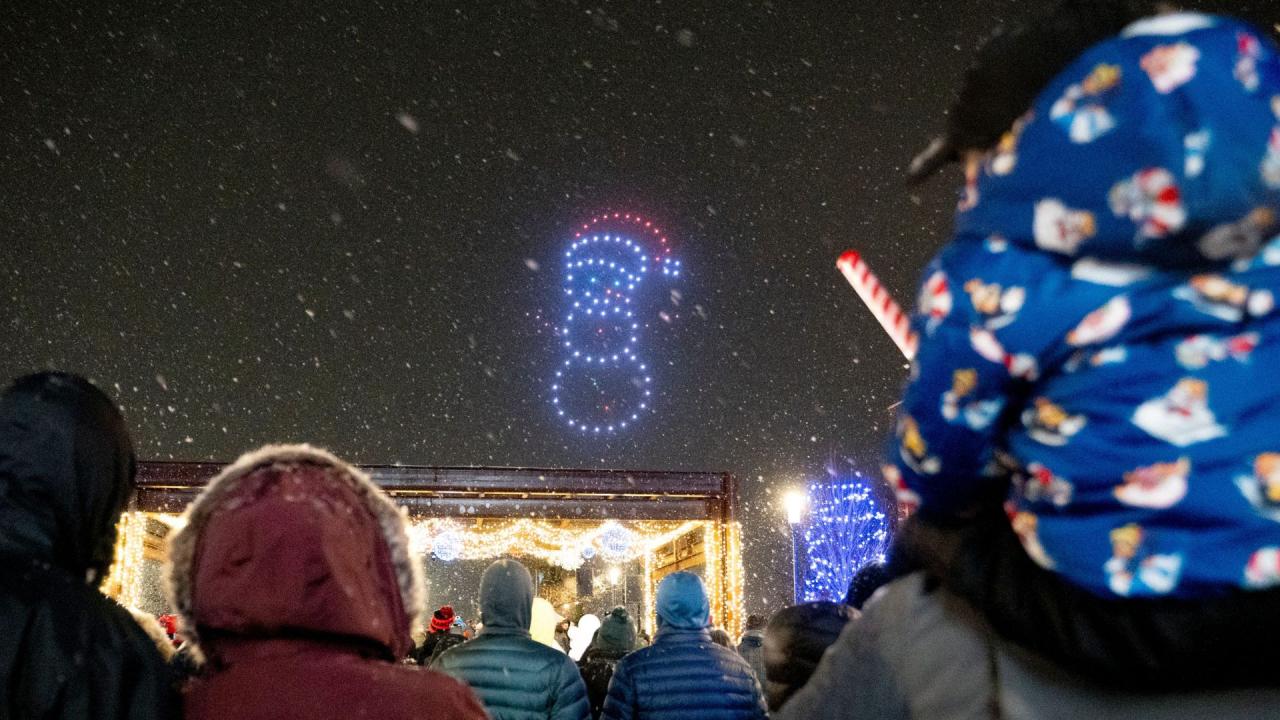
Several potential technical causes could explain the malfunction. Software glitches within the drones’ flight control systems, hardware failures in individual drones (e.g., motor malfunctions, battery issues), or interference from environmental factors (e.g., strong winds, electromagnetic interference) are all possibilities. The specific flight control systems used by the drones, which typically involve GPS navigation, communication protocols, and autonomous flight algorithms, would need thorough investigation to determine the root cause.
Hey, so you heard about that Orlando drone show malfunction? It wasn’t just a minor glitch; things went seriously sideways, leading to what some are calling an orlando drone show accident. Check out that link for the full story. The malfunction itself highlights the importance of rigorous safety protocols in these kinds of large-scale drone displays.
Safety protocols, including emergency landing procedures and fail-safes, were likely in place, but their effectiveness in this specific situation needs further examination.
That Orlando drone show malfunction really got people talking about safety protocols, huh? It makes you appreciate the meticulous planning that goes into other large-scale drone displays, like the amazing niagara falls drone show , which I hear has a fantastic safety record. Hopefully, the Orlando incident will lead to improvements and prevent similar mishaps in future drone shows.
| Drone Model | Potential Failure Points | Redundancy Measures | Recovery Protocols |
|---|---|---|---|
| Model A | Motor failure, GPS signal loss, battery depletion | Backup motors, redundant GPS receivers | Autonomous landing, manual override |
| Model B | Software glitch, communication disruption, sensor malfunction | Software version control, failsafe modes | Emergency landing sequence, ground control intervention |
| Model C | Hardware failure, power system issues | Dual power systems, robust casing | Parachute deployment, controlled descent |
| Model D | Communication interference, GPS spoofing | Anti-jamming technology, encrypted communication | Fail-safe flight mode, ground station intervention |
Impact and Response to the Malfunction
The malfunction had immediate consequences for both the audience and event organizers. The audience experienced a sudden end to the show, some feeling disappointment, others fear. Event organizers likely faced significant reputational damage and potential financial losses. The response from event organizers and authorities involved a swift shutdown of the show, an attempt to recover the malfunctioning drones, and an assessment of any injuries or property damage.
- Immediate show suspension.
- Drone recovery efforts.
- Assessment of injuries and property damage.
- Investigation into the cause of the malfunction.
- Communication with attendees and stakeholders.
Preventive Measures and Future Implications
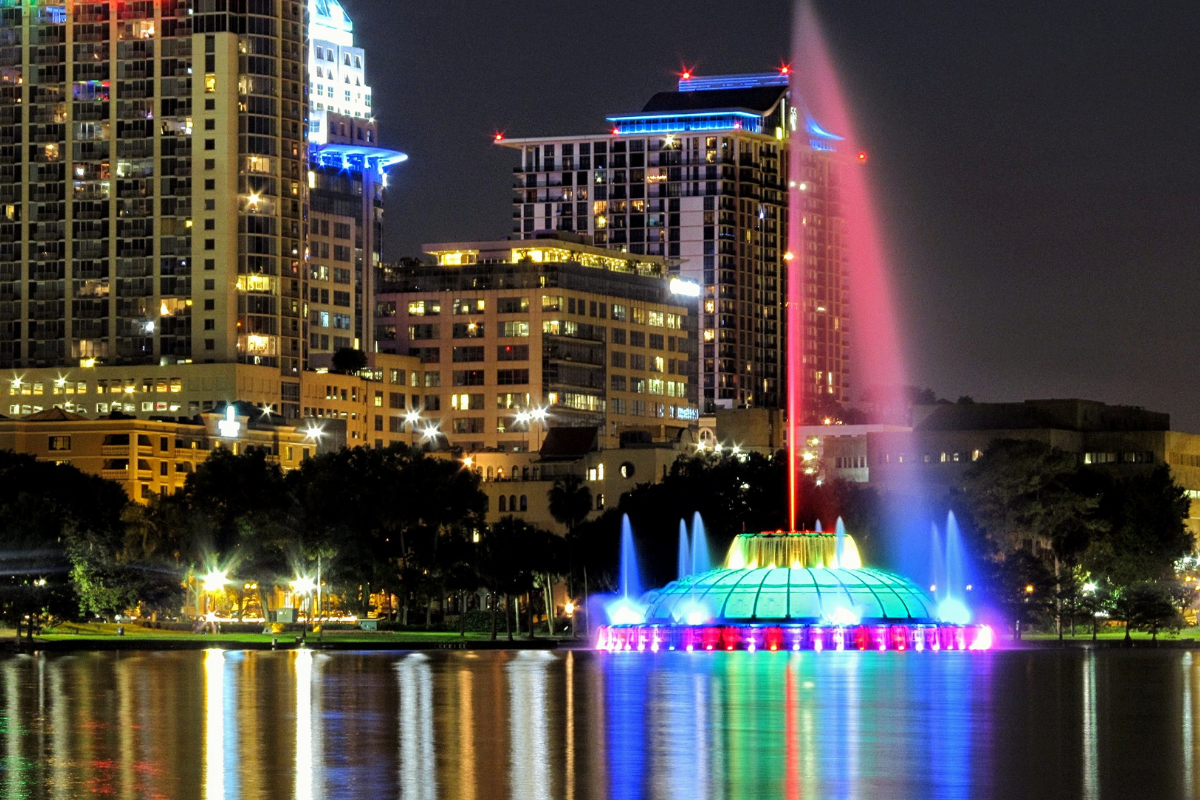
To prevent similar incidents, several preventative measures are crucial. These include rigorous pre-flight checks, redundant systems within the drones themselves, improved communication protocols, and more robust environmental monitoring systems. This incident can be compared to other drone show malfunctions, identifying common failure points and best practices across the industry. The long-term implications might include stricter regulations, increased insurance costs, and a renewed focus on drone safety technology.
Advanced drone technology, such as improved GPS and communication systems, enhanced autonomous flight capabilities, and fail-safe mechanisms, can significantly reduce the likelihood of future malfunctions. The use of AI-powered systems to predict and mitigate potential issues in real-time could also enhance safety and reliability.
Visual Representation of the Malfunction, Orlando drone show malfunction
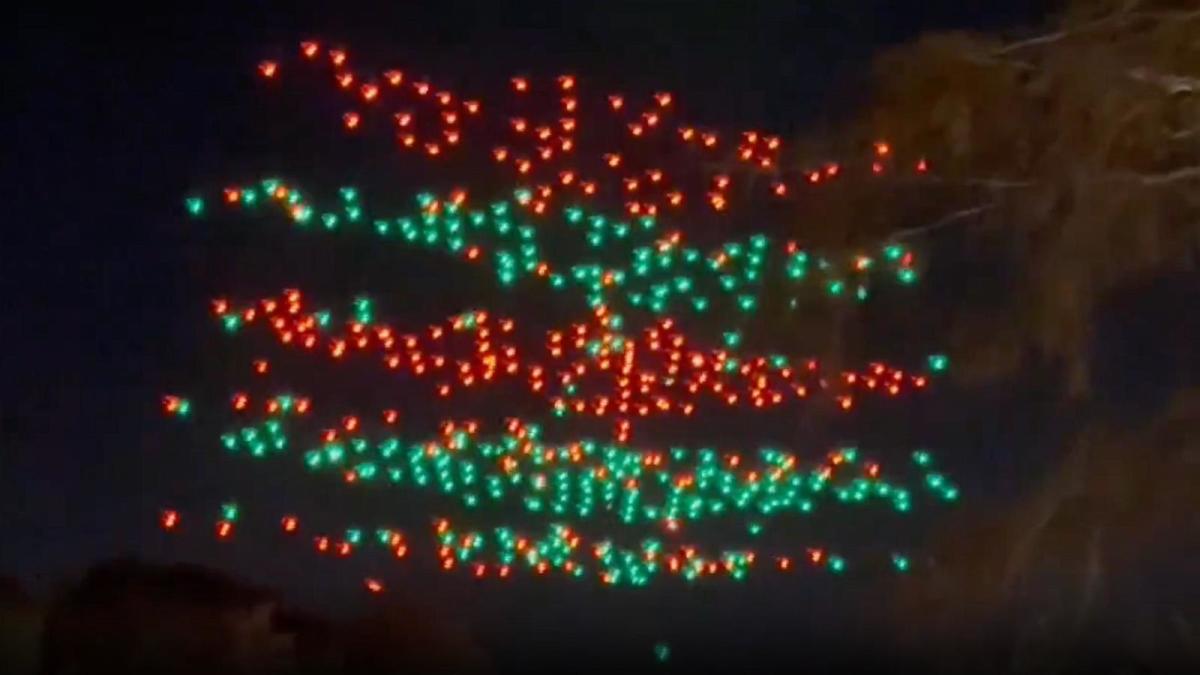
The visual impact of the malfunction was striking. Initially, the drones formed intricate patterns, showcasing a vibrant and coordinated light show. As the malfunction progressed, the drones’ movements became erratic and disorganized. Their lights flickered erratically, changing colors and intensity, creating a chaotic and disjointed visual display. The drones’ flight paths became unpredictable, with some descending rapidly while others moved in seemingly random directions.
This unexpected spectacle, while visually captivating in a chaotic way, created a stark contrast to the planned, synchronized performance, leaving a lasting impression on the audience.
Hey, so you heard about that crazy Orlando drone show malfunction? It was a total mess, right? Apparently, things went south pretty quickly, check out this article for the full scoop on what happened: orlando drone show malfunction. Seriously, the whole thing went viral; it’s a prime example of what can go wrong with even the best-planned drone shows.
Final Summary
The Orlando drone show malfunction serves as a stark reminder of the complexities and potential risks involved in large-scale drone displays. While the incident resulted in no serious injuries or significant property damage, it highlighted the critical need for robust safety protocols, rigorous testing, and continuous improvement in drone technology. Moving forward, a comprehensive review of existing procedures and a proactive approach to technological advancements are essential to ensuring the safe and spectacular future of drone shows.
The incident should not overshadow the potential of drone light shows, but rather serve as a catalyst for enhancing safety and reliability.
FAQ Guide: Orlando Drone Show Malfunction
What type of drones were used in the show?
This information is often not publicly released for security reasons. However, investigation reports may eventually reveal the specific drone models.
Were there any injuries reported?
Initial reports suggested no serious injuries, but a full investigation would confirm this.
What was the estimated cost of the damage?
The financial impact, including damage to drones and potential event cancellations, is typically not immediately available.
What regulatory bodies are investigating the incident?
This would depend on the location and the severity of the incident; local authorities and possibly the FAA (in the US) would be involved.
